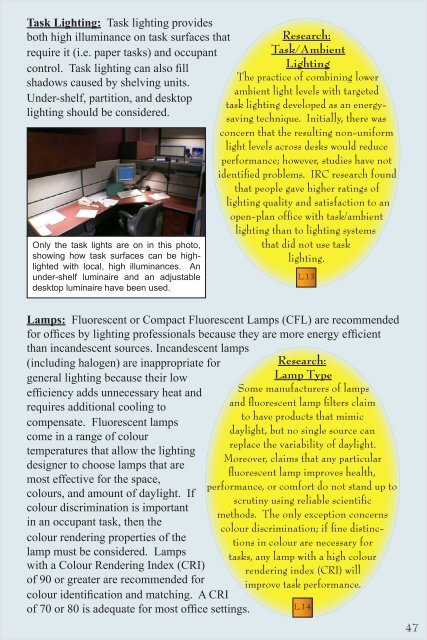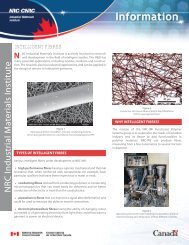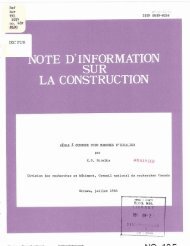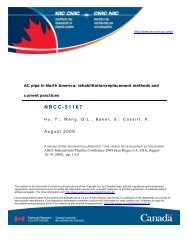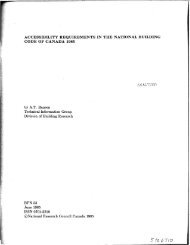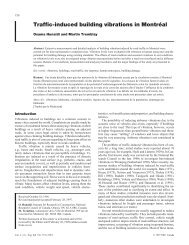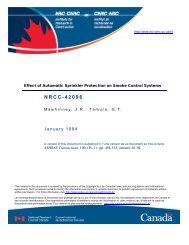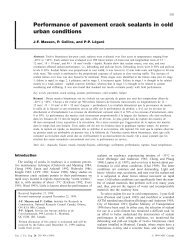Workstation design for organizational productivity - National ...
Workstation design for organizational productivity - National ...
Workstation design for organizational productivity - National ...
Create successful ePaper yourself
Turn your PDF publications into a flip-book with our unique Google optimized e-Paper software.
Task Lighting: Task lighting providesboth high illuminance on task surfaces thatrequire it (i.e. paper tasks) and occupantcontrol. Task lighting can also fillshadows caused by shelving units.Under-shelf, partition, and desktoplighting should be considered.Only the task lights are on in this photo,showing how task surfaces can be highlightedwith local, high illuminances. Anunder-shelf luminaire and an adjustabledesktop luminaire have been used.Research:Task/AmbientLightingThe practice of combining lowerambient light levels with targetedtask lighting developed as an energysavingtechnique. Initially, there wasconcern that the resulting non-uni<strong>for</strong>mlight levels across desks would reduceper<strong>for</strong>mance; however, studies have notidentified problems. IRC research foundthat people gave higher ratings oflighting quality and satisfaction to anopen-plan office with task/ambientlighting than to lighting systemsthat did not use tasklighting.L.13Lamps: Fluorescent or Compact Fluorescent Lamps (CFL) are recommended<strong>for</strong> offices by lighting professionals because they are more energy efficientthan incandescent sources. Incandescent lamps(including halogen) are inappropriate <strong>for</strong>general lighting because their lowefficiency adds unnecessary heat andrequires additional cooling tocompensate. Fluorescent lampscome in a range of colourtemperatures that allow the lighting<strong>design</strong>er to choose lamps that aremost effective <strong>for</strong> the space,colours, and amount of daylight. Ifcolour discrimination is importantin an occupant task, then thecolour rendering properties of thelamp must be considered. Lampswith a Colour Rendering Index (CRI)of 90 or greater are recommended <strong>for</strong>colour identification and matching. A CRIof 70 or 80 is adequate <strong>for</strong> most office settings.Research:Lamp TypeSome manufacturers of lampsand fluorescent lamp filters claimto have products that mimicdaylight, but no single source canreplace the variability of daylight.Moreover, claims that any particularfluorescent lamp improves health,per<strong>for</strong>mance, or com<strong>for</strong>t do not stand up toscrutiny using reliable scientificmethods. The only exception concernscolour discrimination; if fine distinctionsin colour are necessary <strong>for</strong>tasks, any lamp with a high colourrendering index (CRI) willimprove task per<strong>for</strong>mance.L.1447


